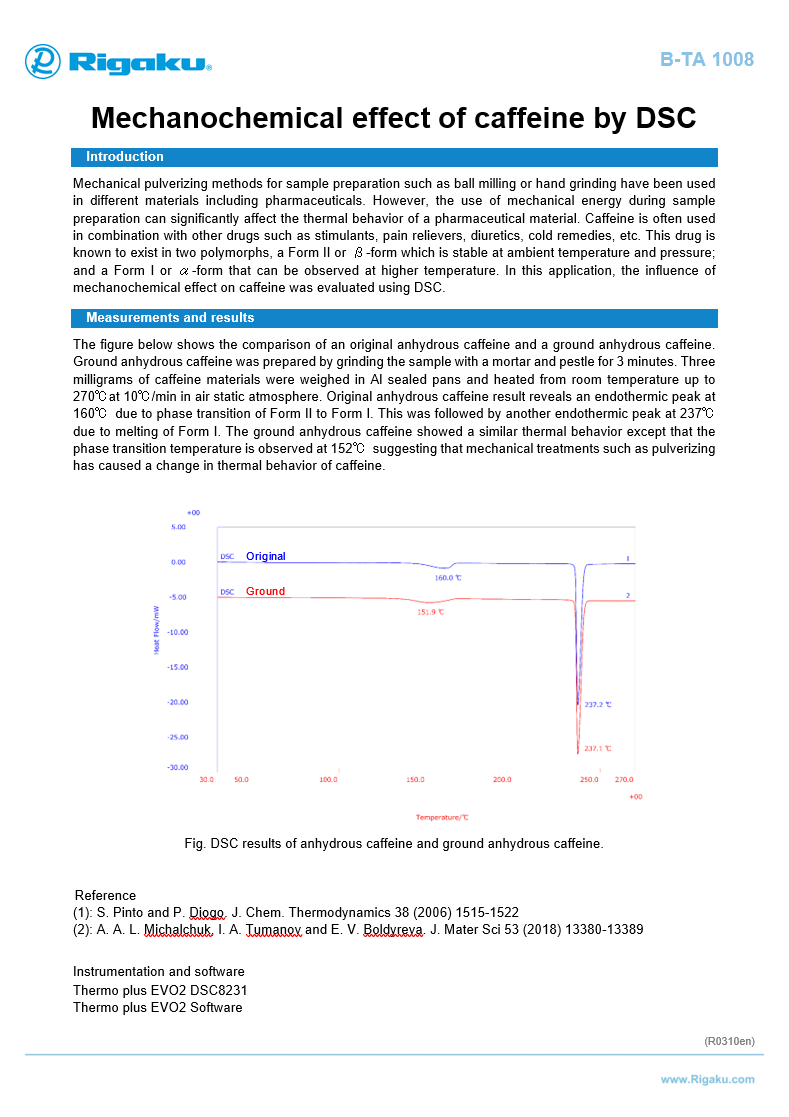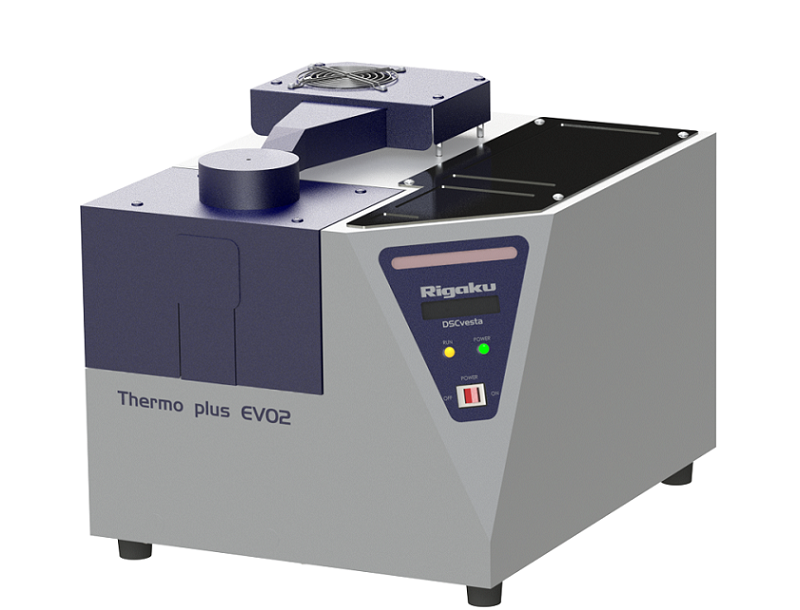THERMAL ANALYSIS (DSC) FOR PHARMACEUTICALS
Measure the reaction temperature of a substance
Thermal analysis is a widely used analytical technique for understanding the thermal behavior of materials. Rigaku announced Japan's first automatic recording thermal analyzer "Thermoflex Series" in 1957 and has developed the world’s first thermal balance based on the differential principle in 1981. Since then, Rigaku has a long history in manufacturing, developing, and selling thermal analyzers for decades.
Aside from general-purpose thermal analyzers, we are constantly developing new instruments including combined techniques in thermal analysis such as TG-MS and XRD-DSC, controlled-rate thermal analysis, and thermal analysis in water vapor atmosphere, and continue to provide better solutions to our customers.
All physical properties are evaluated during product development and material selection. There are many important factors related to thermal behavior such as melting point, thermal decomposition temperature, and coefficient of thermal expansion in the physical property evaluation.
Such thermal behavior is an essential physical property in all material fields and is used in a wide range of fields such as polymers, pharmaceuticals, metals, and ceramics. Thermal analysis is extensively applied not only in product development applications but also in quality control.
What is thermal analysis? Thermal analysis is a series of automated techniques that measure a substance's physical properties as a function of temperature or time.
Hence, thermal analysis is a method that measures the phase change when a sample is heated or cooled. It evaluates the thermal properties of a sample such as the reaction temperature during melting or dehydration; thermal expansion rate of the sample and other properties.
There are various techniques used for thermal analysis depending on what physical properties are observed. For example, TG (Thermogravimetry) quantifies the mass change of a sample and DSC (Differential Scanning Calorimetry) analyzes the energy change. Other analytical techniques include DTA (Differential Thermal Analysis), TMA (Thermomechanical Analysis), and EGA (Evolved Gas Analysis) methods.
For pharmaceuticals, thermal analysis is used to develop a phase diagram and to understand phase relationships.
Under changes in temperature, pressure, and chemical potential, a material will often change state (solid – liquid – gas). Furthermore, even while a material remains solid, it may change solid form. A hydrate can de-hydrate at higher temperatures and re-hydrate when the humidity is raised. A crystalline form may melt as the temperature is raised to recrystallize to another crystalline form at higher temperatures. An understanding of the phase diagram of an active molecule is critical in establishing safe manufacturing and storage conditions. Because a change in state or solid form will either require energy (endothermic) or release energy (exothermic), they can be measured by thermal analysis equipment (for example, DSC). Changes in solid form like de-hydration will also cause a weight change due to the loss of water. This can also be monitored during thermal analysis (for example TG).
While most solid form screens are designed to find the most stable form, there are many instances where the stable form is different from one temperature to another or at different humidity levels (enantiotropic). This can have a catastrophic impact on manufacturing if not fully understood. Knowledge of the phase diagram of an active compound is so critical to pharmaceutical development and manufacturing that you will find thermal analysis in every facility carrying out solid form screening.
The study of a phase diagram is usually performed as a function of temperature under dry conditions – although special sample pans (hermetically sealed) can allow some retained humidity. One of the unique and exciting features of the Rigaku DSC system is that it has the ability to study phase relationships as a function of temperature and humidity. This can be of huge benefit to pharmaceutical companies in designing manufacturing and storage conditions.
Once you reach formulation and excipients are combined with the active compound, then the phase relationships can change significantly. Combining an active compound with excipients at extreme humidity or temperature conditions can have unforeseen consequences on the solid form. Thermal analysis can be used to characterize the occurrence of excipient–active interactions that might be problematic.




